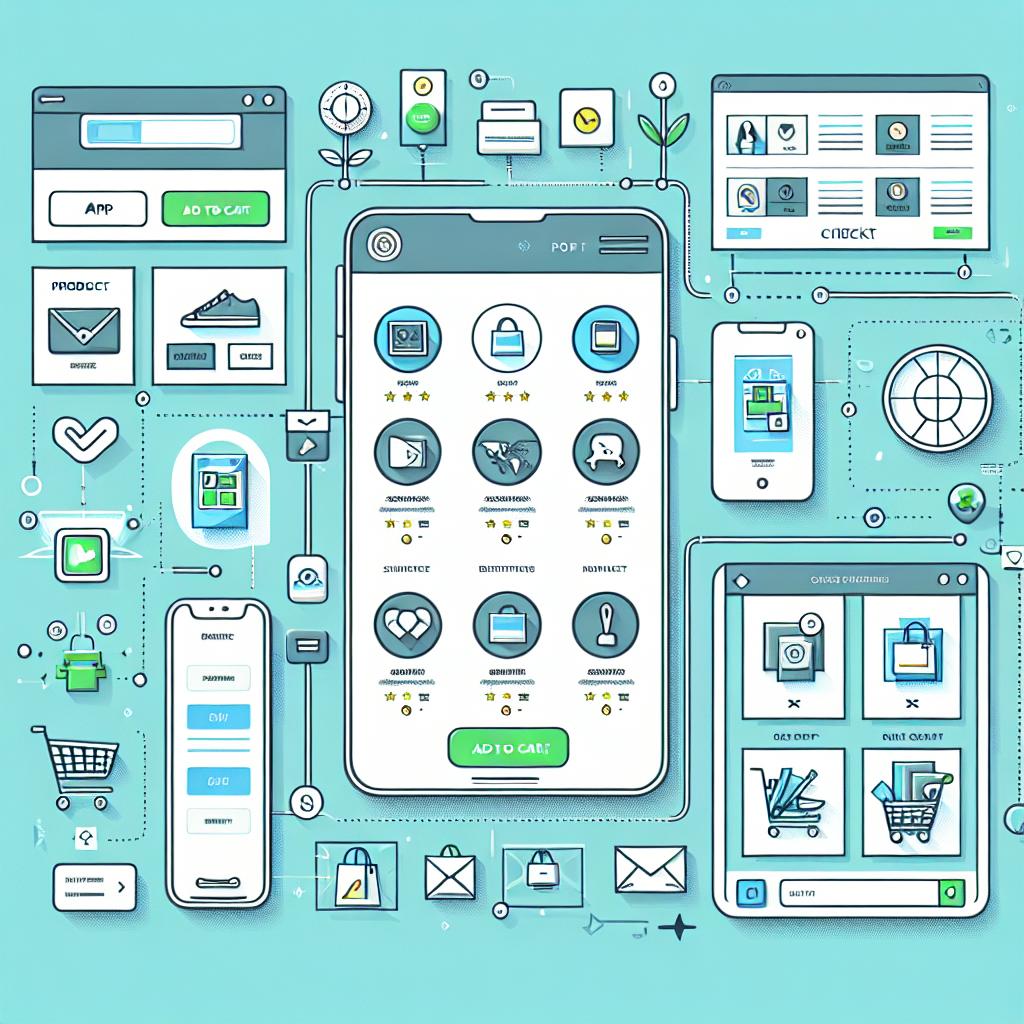Sales represent one of the most anticipated times of the year for both consumers and retailers. However, for retailers, these periods of intense competition cannot be approached casually. A well-planned marketing strategy becomes crucial to stand out, attract customers’ attention and maximize sales. But how can you turn the sales frenzy into a real and profitable opportunity for your business? In this article, we will reveal the secrets to creating an effective marketing strategy to stand out from the crowd, increase conversions, and retain customers beyond the sales period. If you are ready to turn sales into a powerful lever for your success, read on-your business will come out transformed.
Table of Contents
- Preparing the ground: Market analysis and segmentation
- Creating irresistible offers: Pricing strategies and promotions
- Content planning: Capture attention with engaging storytelling
- Harnessing the power of social media: Targeted and engaging campaigns
- Optimizing the online shopping experience: User-friendly websites and apps
- Monitoring and measurement: Analysis of results and feedback for improvement

Preparing the ground: Market analysis and segmentation
Before launching a marketing campaign for the sales period, it is essential to analyze and segment the market accurately. This process allows you to identify different categories of customers and tailor offers to maximize appeal and sales. Start by examining demographic data, such as the age, gender, income, and geographic location of your customers. Use this data to create detailed profiles, which will help you better understand their needs and buying behaviors.
Once demographic data have been collected, it is also important to consider psychographic aspects. These include interests, lifestyles, values, and motivations. For example, if your target audience consists mainly of young professionals, you may want to promote products that improve efficiency and productivity. Creating psychographic profiles will help you personalize your marketing messages, making them more relevant and engaging for each niche market.
To get a clear view of the market, consider using **SWOT analysis** (Strengths, Weaknesses, Opportunities, Threats). This tool helps you identify both your strengths and those of your competitors. Here is a simple table to illustrate its use:
| Strengths | Weaknesses |
|---|---|
| Quality of products | Limited production capacity |
| Customer loyalty | Online experience can be improved |
| Opportunities | Threats |
| Increased seasonal demand | Intense competition |
| Expansion into the online marketplace | Changes in consumer preferences |
With this information, you can create targeted offers and advertising campaigns that make the most of your strengths and opportunities while mitigating weaknesses and threats.

Creating irresistible offers: Pricing strategies and promotions
To attract customer interest during the sale period, it is critical to present offers that are truly irresistible. **Well-designed pricing strategies** can make the difference between a simple discount and a shopping experience that customers will want to repeat. Consider these tactics to maximize the effectiveness of your promotions:
- Limited-time discounts: Creating a sense of urgency with offers that last only a few hours or days can incentivize impulse purchases.
- Progressive discount planning: Offer discounts that increase with the number of products purchased to encourage more spending.
- Bundle offers: Combine complementary products into one bundle at an attractive discount.
| Promotion | Details |
|---|---|
| 30% off shoes | Two days only |
| Buy 2, get 1 free | On selected products |
| Summer Bundle | T-shirt + Shorts at a special price |
Clear and engaging communication is essential to the success of your promotions. Use **colorful banners**, punchy **calls to action** and **e-mail marketing** to spread the word about your offers. Leverage social media to create expectation and engagement by sharing previews and countdowns that keep anticipation high among consumers. Remember, the key is to make your customers feel special and give them a compelling reason to choose you over your competitors.

Content planning: Capture attention with engaging storytelling
To capture customers’ attention during the sale period, **storytelling is one of the most powerful weapons at your disposal**. Creating captivating narratives allows you to emotionally connect with your audience, making your message not only more memorable, but also more compelling. Tell stories that reflect your brand’s values and can make customers feel like they are the protagonist of a unique, one-of-a-kind experience. Consider the following elements to make your stories even more persuasive:
- Authentic characters – create characters your customers can identify with.
- Conflicts-introduce challenges or problems that your products can solve.
- Happy results-show how your product positively transforms customers’ lives.
Once you have created your storytelling, integrate these narratives into all communication channels. Whether it’s social media, the company blog or newsletters, maintaining a consistent storytelling thread increases the recognition and effectiveness of your message.
| Channel | Story Type | Frequency |
|---|---|---|
| Social Media | Visual micro-stories | Daily |
| Blog | In-depth articles | Weekly |
| Newsletter | Customer testimonials | Monthly |

Harnessing the power of social media: Targeted and engaging campaigns
To get the most out of your efforts during the sale period, it is critical to harness the power of social media. Creating **targeted campaigns** allows you to reach specific audiences with personalized offers and content. Use tools such as Facebook Ads and Instagram Stories to segment your target audience based on interests, buying behavior and location. This allows you to focus your advertising budget on the potential customers most likely to buy, thereby increasing the likelihood of conversion.
Commit to creating **involving** content that grabs attention and fuels audience interest. Here are some ideas:
- **Backstage video**: show how you prepare products for the sales.
- **Surveys and quizzes**: invite your followers to participate and offer opinions on their preferences.
- **Contests and giveaways**: incentivize engagement by offering exclusive prizes.
- **Customer testimonials**: share reviews and positive feedback to build trust.
To measure the effectiveness of your campaigns, use **analytics tools** integrated with social media. Monitor essential KPIs such as engagement rate, coverage and conversion. Here is an example of how you might organize your data:
| KPI | Target Value | Actual Result |
|---|---|---|
| Involvement Rate | 10% | 12% |
| Coverage | 100,000 people | 120,000 people |
| Conversion | 5% | 6.5% |
Monitoring this data will help you understand which strategies work best and make adjustments in real time, thus ensuring maximum return on investment.

Optimizing the online shopping experience: User-friendly websites and apps
To turn visitors to your site into loyal customers during sales periods, it is critical to ensure a smooth shopping experience. One of the first things to consider is website navigability. Make sure pages are easily accessible and products are clearly visible and described. Here are some best practices:
- Fast loading times
- Responsive design for all devices
- Quick and accurate product searches
- Advanced filters to refine the search
A user-friendly app can make all the difference in motivating customers to purchase. The app should be intuitive, with quick payment functions and smooth navigation. It is also important to include push notifications for new offers or special promotions to keep customers’ attention.
- Simplified check-out
- Shareable wishlists
- Custom Notifications
- Integrated customer support
| Feature | Description |
|---|---|
| Saved Cart | Allows you to save items for future purchase |
| Data autofill | Reduces information entry time |
| Product Reviews | Provides feedback from other customers |
Also, to further enhance the shopping experience, consider integrating artificial intelligence technologies to suggest products based on past preferences. Shoppers will appreciate a tailor-made shopping experience that exactly meets their needs and desires.

Monitoring and measurement: Analysis of results and feedback for improvement
To get the most out of your marketing strategy during the sale period, it is essential to constantly monitor and measure the results of your initiatives. Use analytics tools such as Google Analytics, social media insights and CRM to gather meaningful data. **Identify which campaigns are driving more traffic and conversions** and closely track daily sales trends. This will enable you to identify possible obstacles early and quickly correct your pitch.
It is also critical to gather feedback directly from your customers. **Ask them for opinions via online surveys, email or social media**. The voice of the customer will give you valuable insights into how to improve your offerings, customer service and overall buying experience. Listed below are some effective ways to gather feedback:
- Post-purchase surveys
- Product Reviews
- Private messages on social media
| Metrics | Description | Examples of Tools |
|---|---|---|
| Traffic | Number of visitors on the site | Google Analytics |
| Conversions | Realized sales | CRM |
| Feedback | Customer opinions | SurveyMonkey |
Use this data and feedback to make informed decisions about how to improve your subsequent campaigns. **Adjust your strategies based on emerging trends and customer preferences**. Continued optimization and refinement of your approach will ensure not only increased sales during sales, but also increased customer loyalty over the long term.
a well-designed marketing strategy for the sales period represents a golden opportunity to increase sales, build customer loyalty and position your brand ahead of the competition. Investing time and resources in planning, analyzing and executing a targeted campaign is not only a smart choice, but an imperative for anyone who wants to get the most out of this season of consumerism. Remember, the foundation of any successful campaign is creativity, attention to detail and the ability to adapt quickly to market needs. Don’t miss your chance to turn sales into a springboard for your business: start planning your strategy today and watch the results blossom. The future of your brand depends on the actions you take now. Don’t procrastinate, take action and make a difference!



